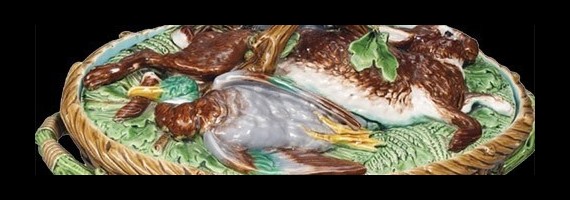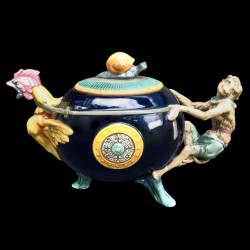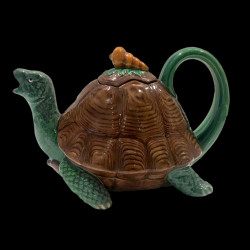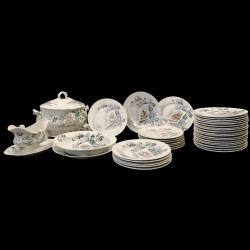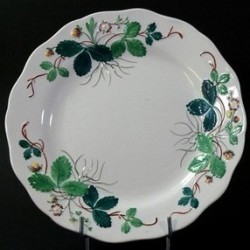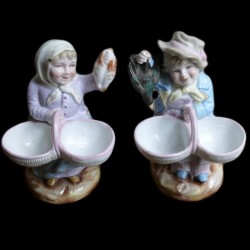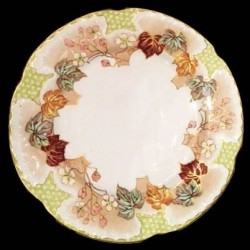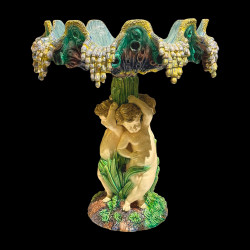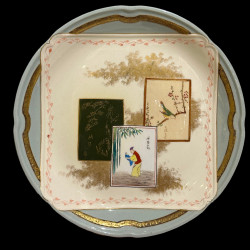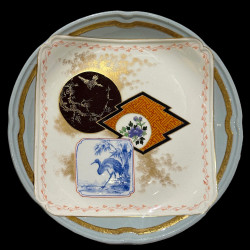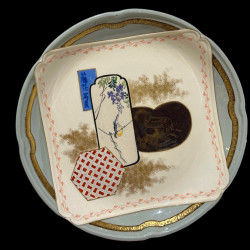Search
Categories
- OUR COLLECTIONS
- Decorative tin plates
- Dinnerware
- Table accessories
- Crystal, Glass
- Melamine, rattan, tray
- Flatware
- Decorations & Christmas
- OTHER COLLECTIONS
- Artel Crystal
- Lobmeyr crystal
- Moser Crystal
- Limoges Handpainted porcelain
- Herend porcelain
- La Bocca Green service
- Médicis Service
- Royal Crown Derby Porcelain
- Porcelain Ludwig II service
- Contemporary collection
- Limoges Porcelain Elisabeth
- Wagner collection
- Artist editions
- Limoges Porcelain Monet Giverny
- ANTIQUES
- WHAT'S NEW
- GIFTS IDEAS
- WEDDING LIST
- SPECIAL OFFERS
Majolica
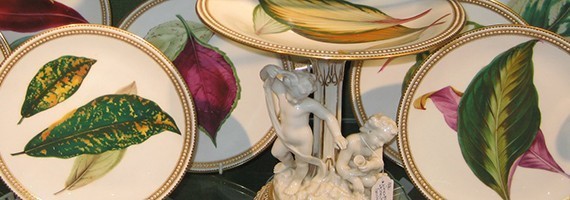
Botanical, ornithological, inspired by traditional Japanese art, stylized and sometimes graphical decorations.
Illustrated plates
Le Parisien service
This service called "the Parisian" evokes the discovery of nature. The decorations of the table plates are around poultry, fish, meat and vegetables. The dessert plates are reminiscent of fruit picking. The shaped pieces are diverse and exceptional
Illustrated by the artist Froment-Richard, the service was produced by the manufactures of Creil & Montereau at the end of the 19th century.
Majolica, Asparagus plates
Hunting scene Herring
Japon or "Monet" Service
"Japon" service, produced from 1876 by the Creil & Montereau pottery, shows the great success of Japonism in tableware production, like the Bracquemond-Rousseau service, produced by the same factory a few years earlier.
The Japon service was a great success and was constantly reissued. It is characterized by fine earthenware with a slightly bluish paste on which a darker blue decoration is printed. The decoration shows cherry trees, plum trees and chrysanthemum flower barriers.
The service is often called "Service Monet" because the artist had a similar one in his home in Giverny.
A "Deluxe" Japon model exists, which uses the same pattern enhanced with red and gold painted flowers, inspired by the imari gold brocade style.
Pair of Aesthetic Movement style vases attributed to Christopher Dresser for Old Hall Earthenware Ltd circa 1880. Decorated with elephants applied on the sides and gilded, colorful motifs of flowers and plants and a fan with Far Eastern characters on a cracked beige background inspired by Japanese raku ceramics.
1 350,00 €In StockMajolica "Cockerel & Monkey" teapot by Minton Archive Collection. Reedition of the late 20th of famous majolica models realized c.1870. Signed and numbered 577/2500, limited edition, made in 1994.
580,00 €In StockMajolica Tortoise Teapot by Minton Archive Collection. reedition of the late 20th of famous majolica model realized c.1870. Signed and numbered 111/2500, limited edition, made in 1999.
580,00 €In Stock- 979,60 €In Stock
Partial "Cartels" Service by Creil& Montereau, 38 pieces.
685,00 €In StockMajolica plate produced by the french manufactory Creil & Montereau. Decorated with strawberry plants in slight barbotine relief and hand-painted red and pink flowers. Marked on the back with Creil & Montereau stamp belonging to the production period 1840-1876 and the name of the model "FRAISE".
125,00 €In StockDesvres porcelain
1 280,00 €In StockBeautiful and sophisticated dinner service from the end of the 19th century with Art Nouveau details on the handles of serving pieces. The colour range is very original and rare, a bit autumnal and embellished with gold
4 000,00 €In StockSardine plate in hand-painted earthenware decorated with Breton fishermen in the seaside and four sardines in barbotine. Inscription in the edge : : "Les vraies sardines Amieux Frères[...] Portent la devise : Toujours mieux". (* The real Amieux Brothers sardines [...] carry the motto : Always better)
280,00 €In StockThis rare set of polychrome enameled earthenware plates, from the Jules Vieillard & Cie manufacture in Bordeaux, features scenes inspired by Japanese art. These scenes are inspired by Hokusai's drawings, "Scenes with Mice." Each piece showcases delicate relief decorations on an ivory background with a black rim and bears the distinctive JVBL monogram...
5 950,00 €In StockThis object is a centerpiece made of barbotine, a ceramic technique where a liquid paste is molded, glazed, and fired to achieve a colorful and textured appearance. The piece depicts three cherubs (or putti), small nude figures often used in art to symbolize love or purity.
3 400,00 €In StockA stunning dessert plate from the "Kioto" collection by the renowned Creil et Montereau manufacturer, dating back to 1878-1884. This fine earthenware piece, typical of the japonisme trend that swept through Europe in the late 19th century, features a refined design combining printing and underglaze painting, with gold highlights adding a luxurious touch.
875,00 €In StockA stunning dessert plate from the "Kioto" collection by the renowned Creil et Montereau manufacturer, dating back to 1878-1884. This fine earthenware piece, typical of the japonisme trend that swept through Europe in the late 19th century, features a refined design combining printing and underglaze painting, with gold highlights adding a luxurious touch.
875,00 €In StockA stunning dessert plate from the "Kioto" collection by the renowned Creil et Montereau manufacturer, dating back to 1878-1884. This fine earthenware piece, typical of the japonisme trend that swept through Europe in the late 19th century, features a refined design combining printing and underglaze painting, with gold highlights adding a luxurious touch.
875,00 €In StockA stunning dessert plate from the "Kioto" collection by the renowned Creil et Montereau manufacturer, dating back to 1878-1884. This fine earthenware piece, typical of the japonisme trend that swept through Europe in the late 19th century, features a refined design combining printing and underglaze painting, with gold highlights adding a luxurious touch.
875,00 €In StockA table set for 12 people, "Marine," signed by Ludovic Napoléon Lepic, was crafted in earthenware by the prestigious Creil and Montereau manufactory in 1889.
26 500,00 €In Stock



